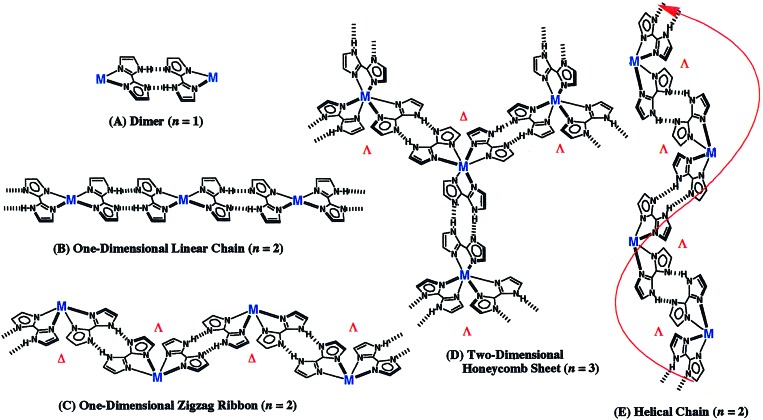Figure 1.
Schematic representations of multidimensional assemblies formed by transition-metal complexes with controlled configurations that regulate the number of Hbim−1 ligands. (A) “Zero-dimensional dimer” constructed by the complementary intermolecular hydrogen bonds between Hbim−1 ligands in the metal complexes coordinated by only one Hbim−1 ligand. (B) One-dimensional linear chain assembled by the metal complexes with trans-configuration coordinated by two Hbim−1 ligands. (C) One-dimensional zigzag ribbon assembled by the metal complexes with at least two Hbim−1 ligands in cis-configuration. (D) Two-dimensional honeycomb sheet linked by three intermolecular hydrogen bondings of the metal complexes with three Hbim−1 ligands. The sheet is constructed by hydrogen bondings with alternate linkage between different optical isomers of Δ and λ types. (E) Helical chain assembled by intermolecular hydrogen bondings between the same optical isomers of Δ or λ containing at least two Hbim−1 ligands. n = number of Hbim−1 ligands coordinated to transition metal ions.

